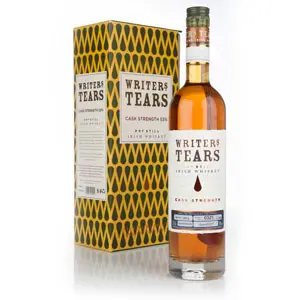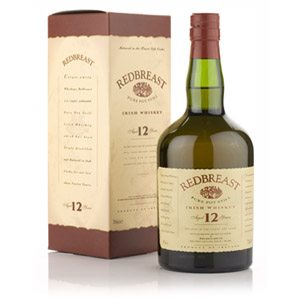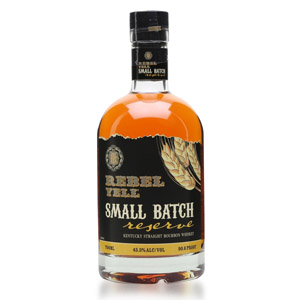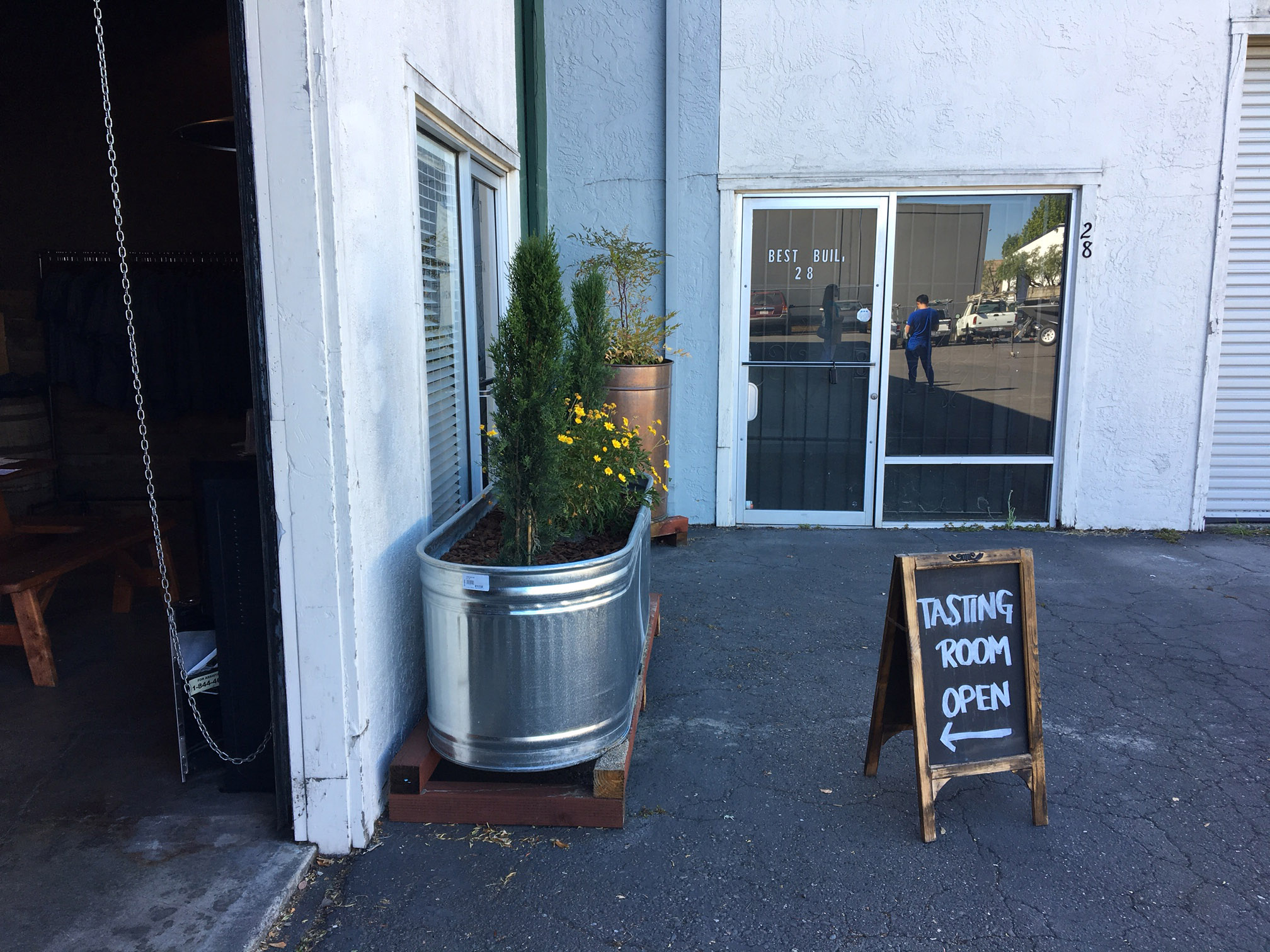
On a very serious business-related trip, for business, my wife and I dragged ourselves (complaining all the way) up to picturesque Sonoma County, California, to trudge through a tour of Sonoma County Distilling Company’s facility and reluctantly down a bunch of samples. For business. Is the IRS gone? OK, good. Sonoma County’s operation is shoehorned into a little multi-bay business park in Rohnert Park, California, which is about as Small-Town America as you get in California. The “downtown” of Cotati, CA (which is a separate town but welded, Siamese Twin style, to Rohnert Park) is literally one block long, and consists of several restaurants, more than several bars, and (of all things) a glove repair shop. Yup. There was even – I kid you not – a pinewood derby being run by the local Cub Scout troop, outside the fire station.
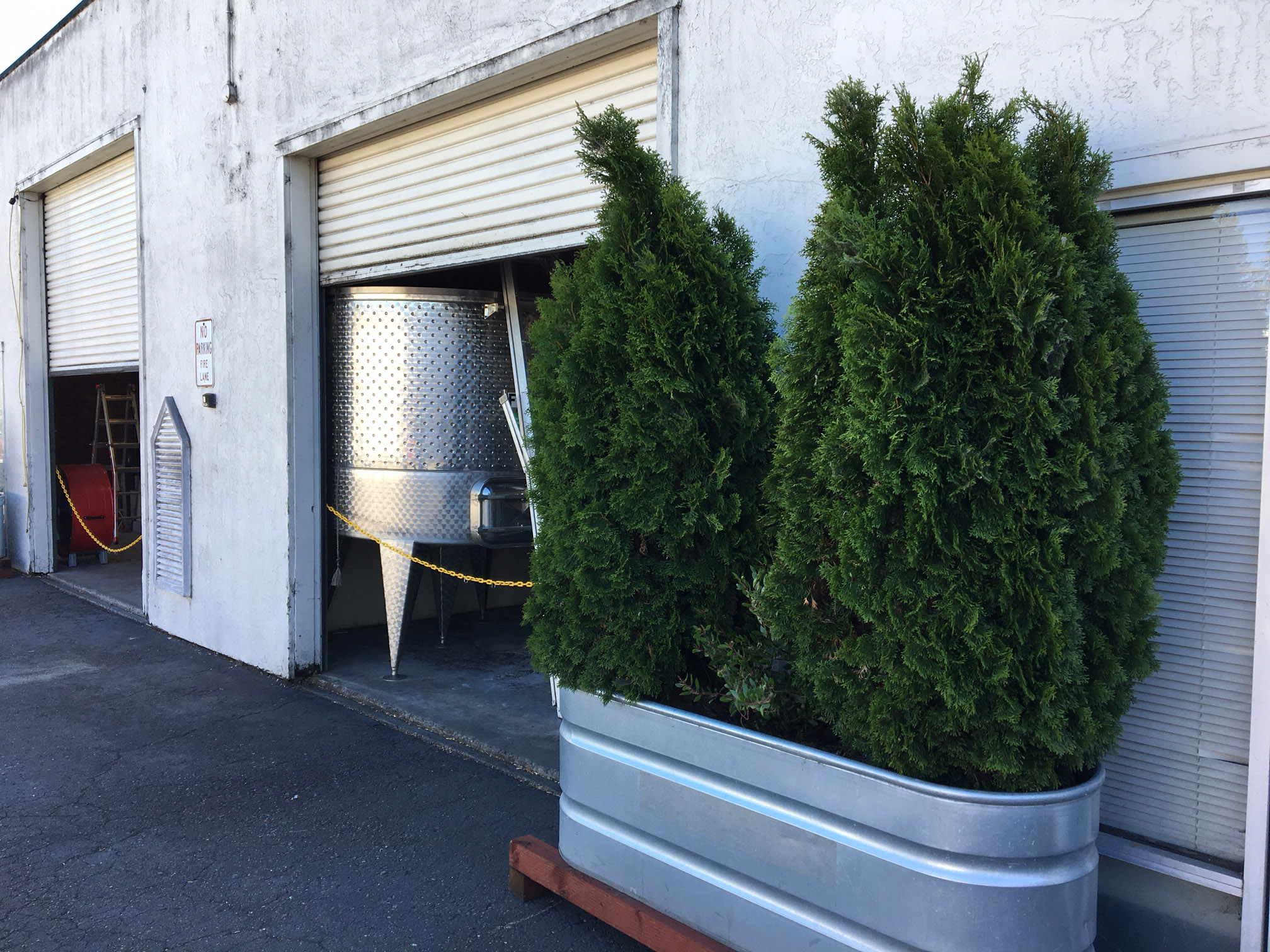
After following the signs for the distillery and still getting lost in the parking lot behind the building, we met fellow seekers-after-whiskey Louis, Dalina, Charles, and Josh. Charles was a member and got us a free tour/tasting (thanks Charles!) and is also responsible for the samples that introduced me to the distillery in the first place, a cask-strength bourbon and a single-barrel rye. We proceeded headlong into the tour, which I will now attempt to recount for you without the aid of any notes whatsoever, because I’m prepared like that.
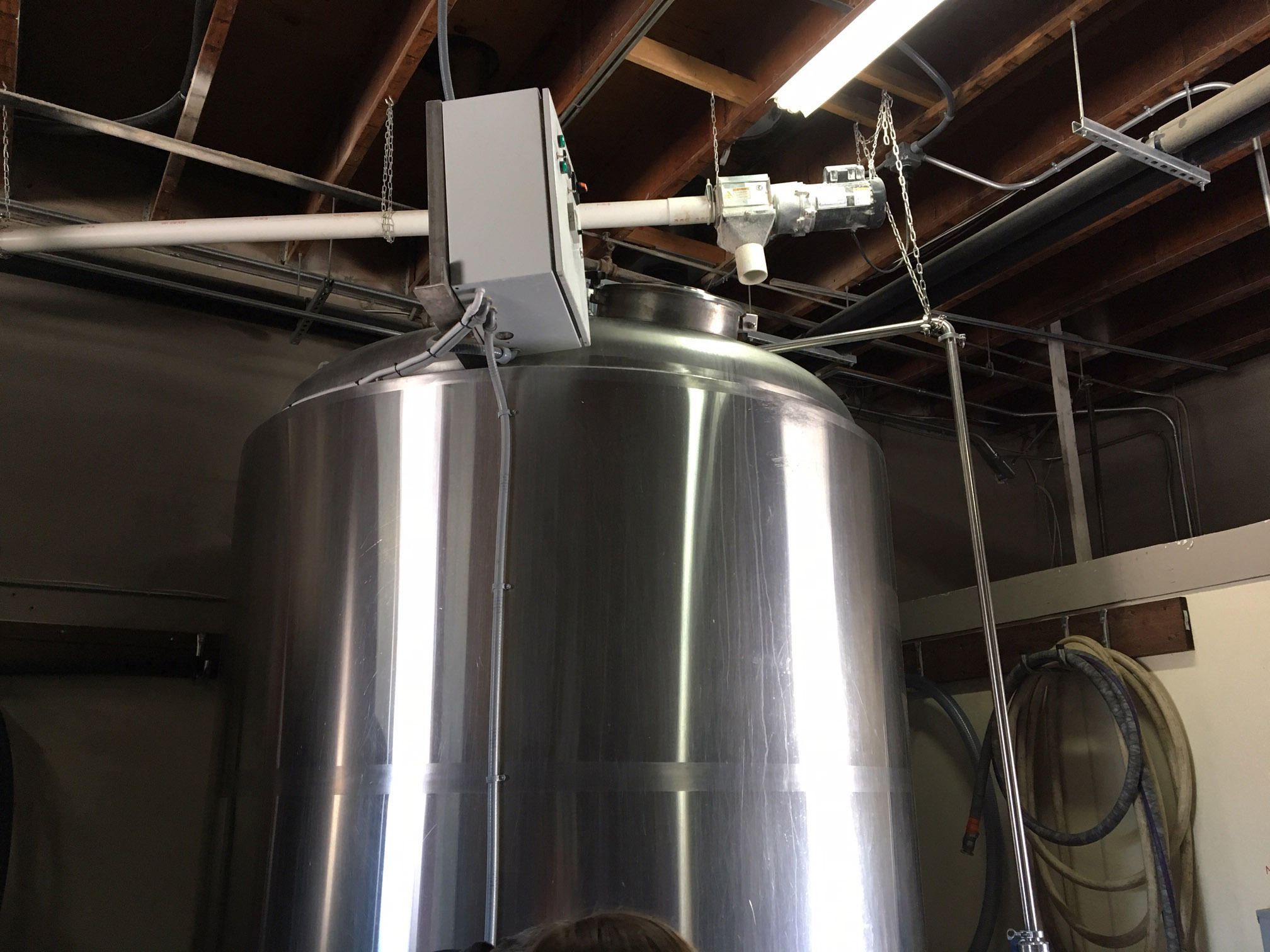
The 1500-gallon stainless-steel mash tun (seen above) is filled with a grist milled on-site with a tiny hammer mill (seen below). The mashbill depends on the whisky being produced, (all of which are listed on the company’s website), but the grains are all now being sourced from California growers, and most are certified organic and non-GMO. Note that whiskies currently in-bottle were made using commodity grains sourced from Canada and the Midwest. The mash is cooked using direct-fired gas burners, and is then pumped into the 4000-gallon stainless-steel open-top fermentation tank. The company is developing proprietary yeast strains, which are pitched with each batch of mash, but the open-top fermenter allows Sonoma County microflora to have an impact on the resulting flavors of the whisky. This is (slightly) similar to the way some Farmhouse-style ales or wild yeast sour ales are made, although with pitched yeast here, the effect of regional microflora is probably minor. The tour guide called this their “airoir”. Ha ha.
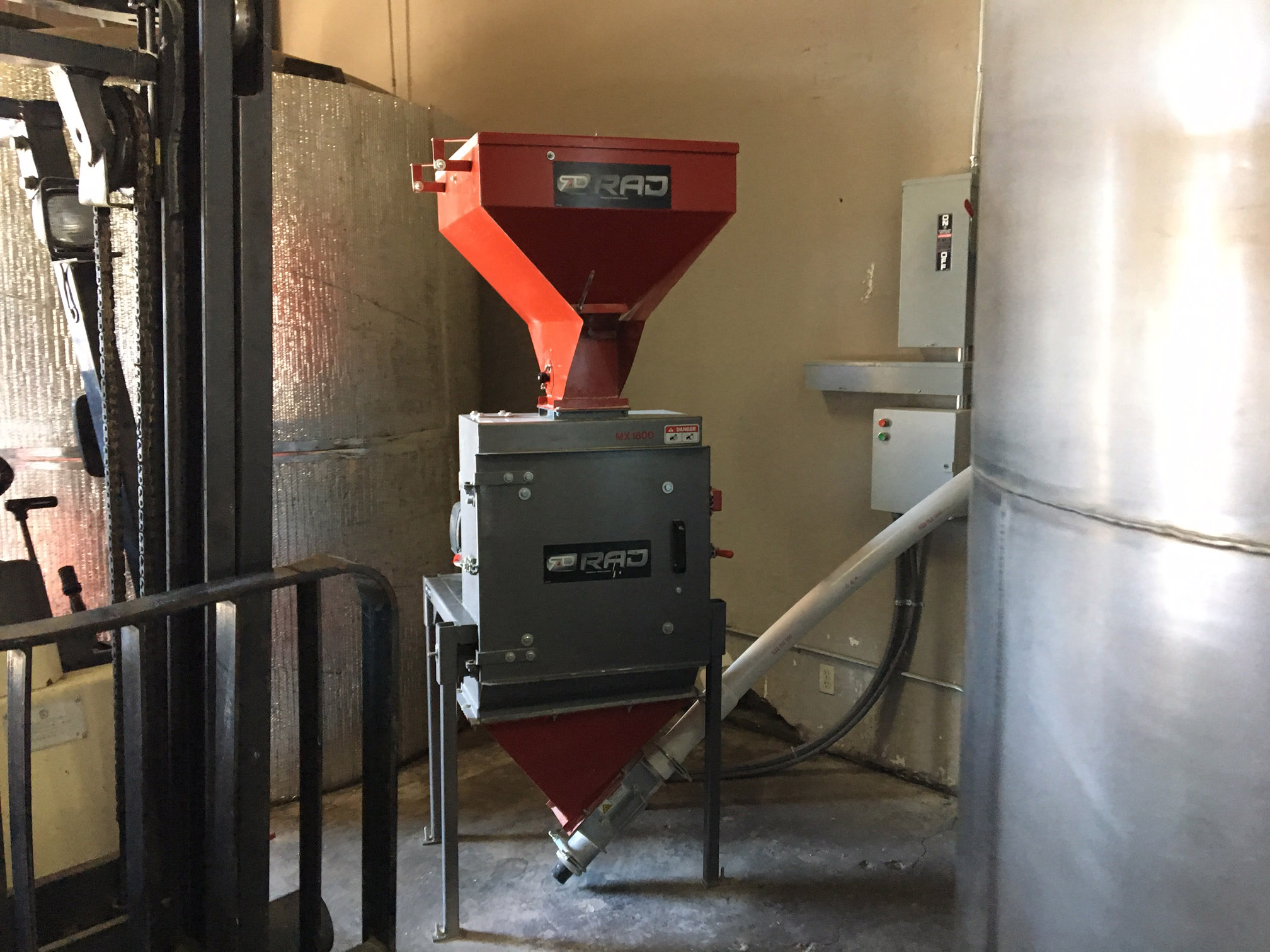
Once the fermentation is done (I think the tour guide said this takes 5 days, but I drank a lot that day, so…), the resulting wash is sparged (aka separated using a fancy-looking filtration device) and the spent grains are given to a local sheep farm. We were all dismayed to hear that, alas, the sheep do not get drunk eating the alcohol-soaked spent grains. The wash is then pumped into one of the distillery’s five copper alembic stills (pictured below). The black fireboxes are safety firewalls in case a crack develops in the direct-fired copper stills. The weird-looking black apparatus attached to the top of each still is the motor that stirs the wash to keep it heating evenly and to prevent scorching.
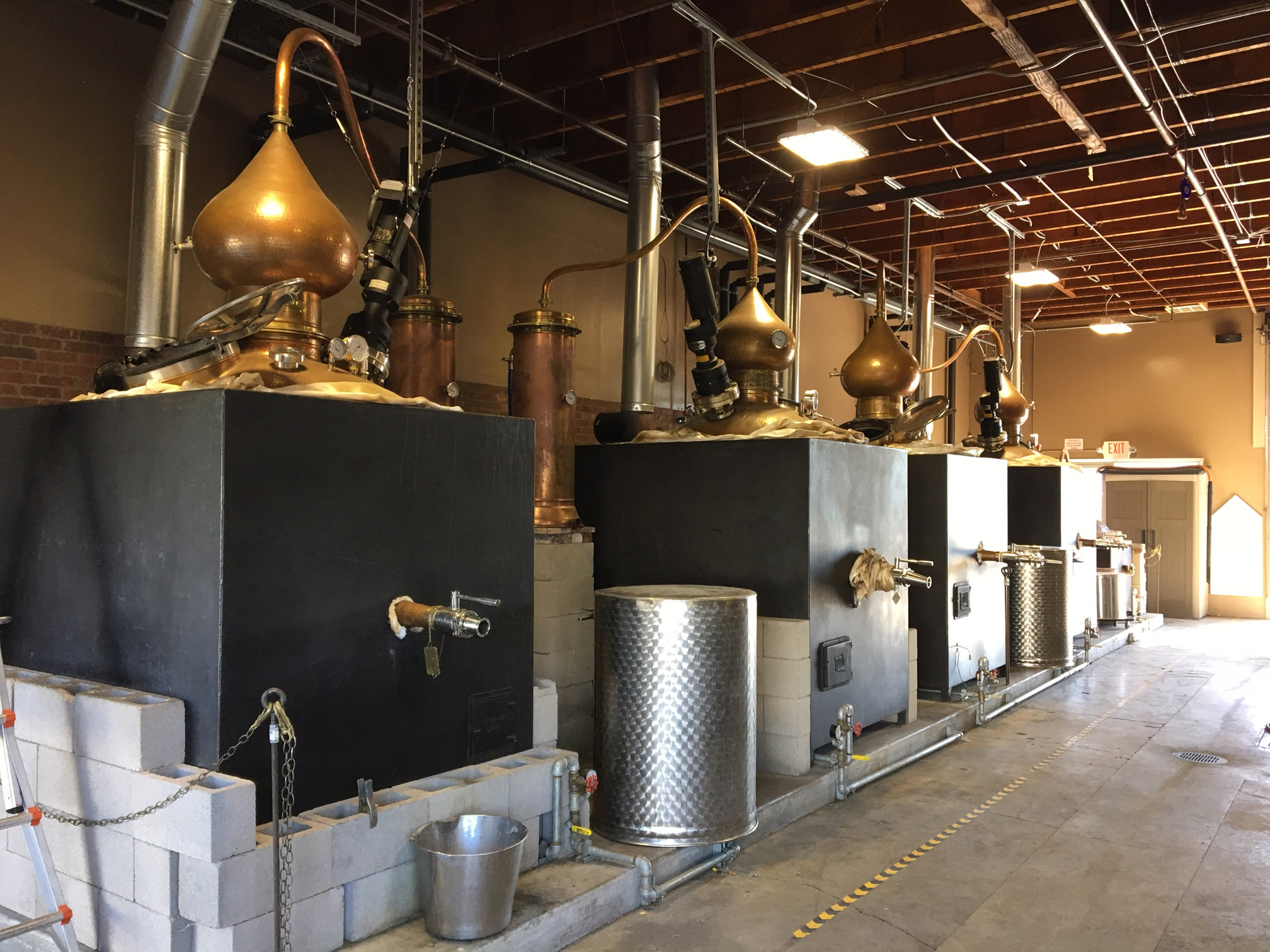
The wash is distilled twice, and appropriate cuts (heads, heart, tails) are made. The finished spirit is filled into either new #3-char American Oak (for the bourbons and ryes) or refill oak (for the wheat whiskey). The distillery has been aging in small casks (the size in gallons escapes me) due to the climate and short turnaround times to keep the business afloat, but is planning to begin filling into larger casks to enable longer aging. In fact, a few barrels are currently bonded and will be released as a four year-old bottled-in-bond bourbon sometime next year.
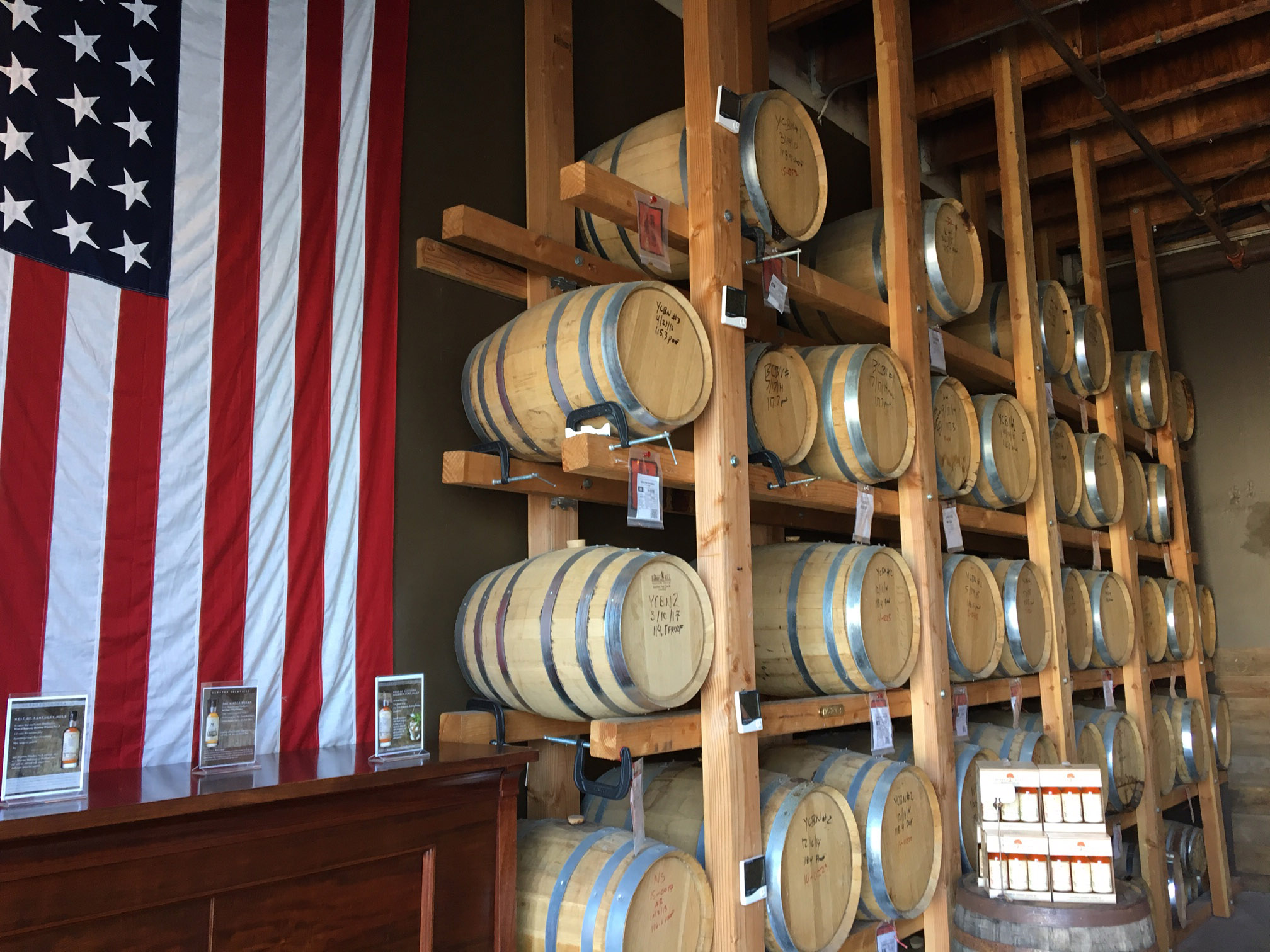
The tour completed, we retired to the tasting room (which doubles as overflow cask storage – they also have a small rickhouse on site) and tasted through a number of selections. The distillery makes both a 46%-48% “regular” bottling and a 55%+ “cask strength” bottling of just about everything they make, which is very cool. Most of the whiskies are $55 for a 750ml bottle of the “regular” strength, and $65 for a 750ml bottle of the cask strength. Some limited-edition bottlings (such as the single-barrel straight rye I reviewed earlier) are more expensive, and bottled in 375ml bottles. The owner and head distiller, Adam Spiegel, also experiments liberally, and one can find such items of interest as a wheat whiskey finished in cognac casks, a rye partially made with cherrywood-smoked malted rye, and (soon!) an American Single Malt. There was even – a first for me – a rye macerated with Perigord black truffles. (If you’re curious, it was definitely fungal but not noticeably truffle-flavored.)
It’s worth noting that despite having grown to bursting in its current space, Sonoma County Distilling will soon be moving to a larger space across the street, and installing a giant copper pot still (I believe they said it’s from Forsyths of Scotland) to vastly increase their capacity. Lots of exciting things coming from Sonoma County Distilling – a new still, larger casks, a 4 year-old bottled-in-bond bourbon, an American single malt, all-Organic all-California grains, and no doubt more experimentation and growth.
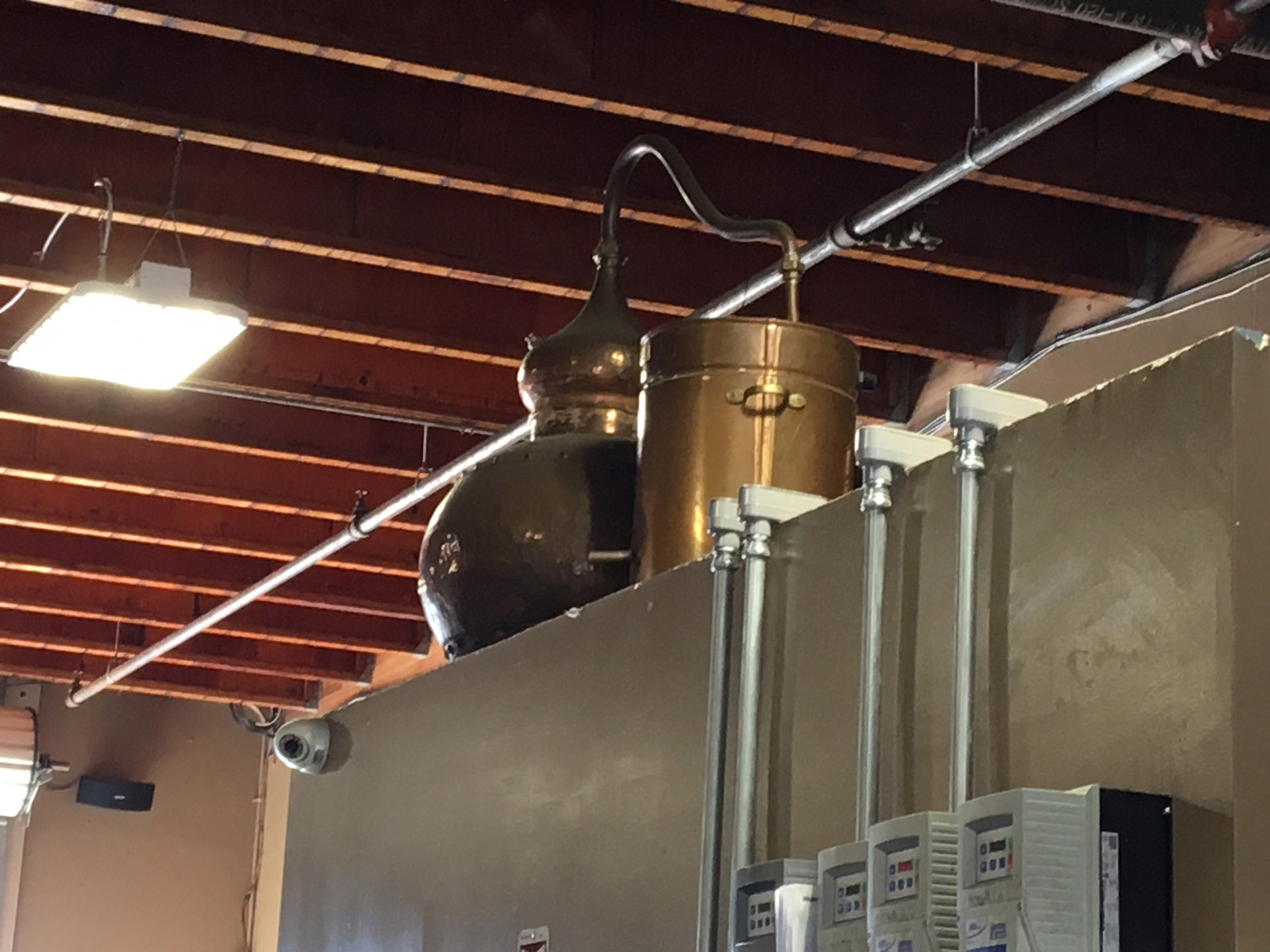
I leave you now with a photo of Adam Spiegel’s adorable little Easy-Bake Oven copper alembic that he learned distillation on. Aww! If you’re ever in Napa or Sonoma, make an effort to get yourself to Rohnert Park and check out Sonoma County Distilling Co. You could tell them that the Scotch Noob sent you, but they’d have no idea what you were talking about, and you’d look pretty foolish, so maybe don’t say that.
Update 5/31/2021: Sonoma has changed its name to Sonoma Distilling Co., and release whiskey under new labels, such as this rye that I found at Costco.


